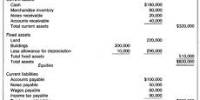Risk-based auditing is a type of auditing that focuses on risk analysis and management. It is an auditing approach that focuses on identifying and assessing risks in an organization’s operations and then using that information to determine the scope and nature of audit procedures. The goal of risk-based auditing is to effectively allocate audit resources by focusing on areas of highest risk.
The Turnbull Report on Corporate Governance in the United Kingdom in 1999 required directors to provide a statement to shareholders outlining the significant risks to the business. This encouraged auditors to investigate these risks rather than simply checking compliance with existing controls.
Here are the key steps involved in risk-based auditing:
- Risk assessment: The auditor assesses the organization’s risk profile by identifying and evaluating potential risks and their impact on the organization’s objectives. This involves analyzing internal and external factors, such as industry trends, regulatory changes, and internal control systems.
- Risk prioritization: Once the risks are identified, they are prioritized based on their significance and potential impact on the organization. High-risk areas are given more attention and resources during the audit process.
- Audit planning: Based on the identified risks, the auditor creates an audit plan. The plan outlines the audit’s objectives, scope, and approach, as well as the specific areas and processes to be examined.
- Audit procedures: The auditor performs detailed testing and examination of the identified risk areas. This may involve reviewing documentation, conducting interviews, analyzing financial data, and testing internal controls.
- Reporting: The audit findings are documented in a comprehensive report, which includes the identified risks, audit procedures performed, and the results of the examination. The report may also provide recommendations for addressing the identified risks and improving overall organizational performance.
COSO guidelines and the first international standard, AS/NZS 4360, were among the risk management standards. The latter is now the foundation for a family of international risk management standards known as ISO 31000.
The benefits of risk-based auditing include:
- Efficient resource allocation: By focusing audit efforts on high-risk areas, resources are allocated where they are most needed, improving the effectiveness and efficiency of the audit process.
- Enhanced risk management: Risk-based auditing helps organizations identify and understand their key risks, enabling them to implement appropriate controls and mitigation strategies.
- Increased assurance: By targeting areas of highest risk, risk-based auditing provides greater assurance that significant risks are being properly addressed and managed.
A traditional audit would concentrate on the transactions that comprise financial statements such as the balance sheet. A risk-based approach will look for risks that have the greatest potential impact. Political and social risks, such as the potential impact of legislation and demographic change, will then be included in strategic risk analysis.
An experiment suggested that managers might respond to risk-based auditing by shifting activity to ostensibly low-risk accounts. Auditors would need to be prepared for such attempts to game the system.
Overall, risk-based auditing assists auditors in prioritizing their efforts, identifying key risks, and providing meaningful insights and recommendations to organizations, resulting in better risk management and overall performance.
















